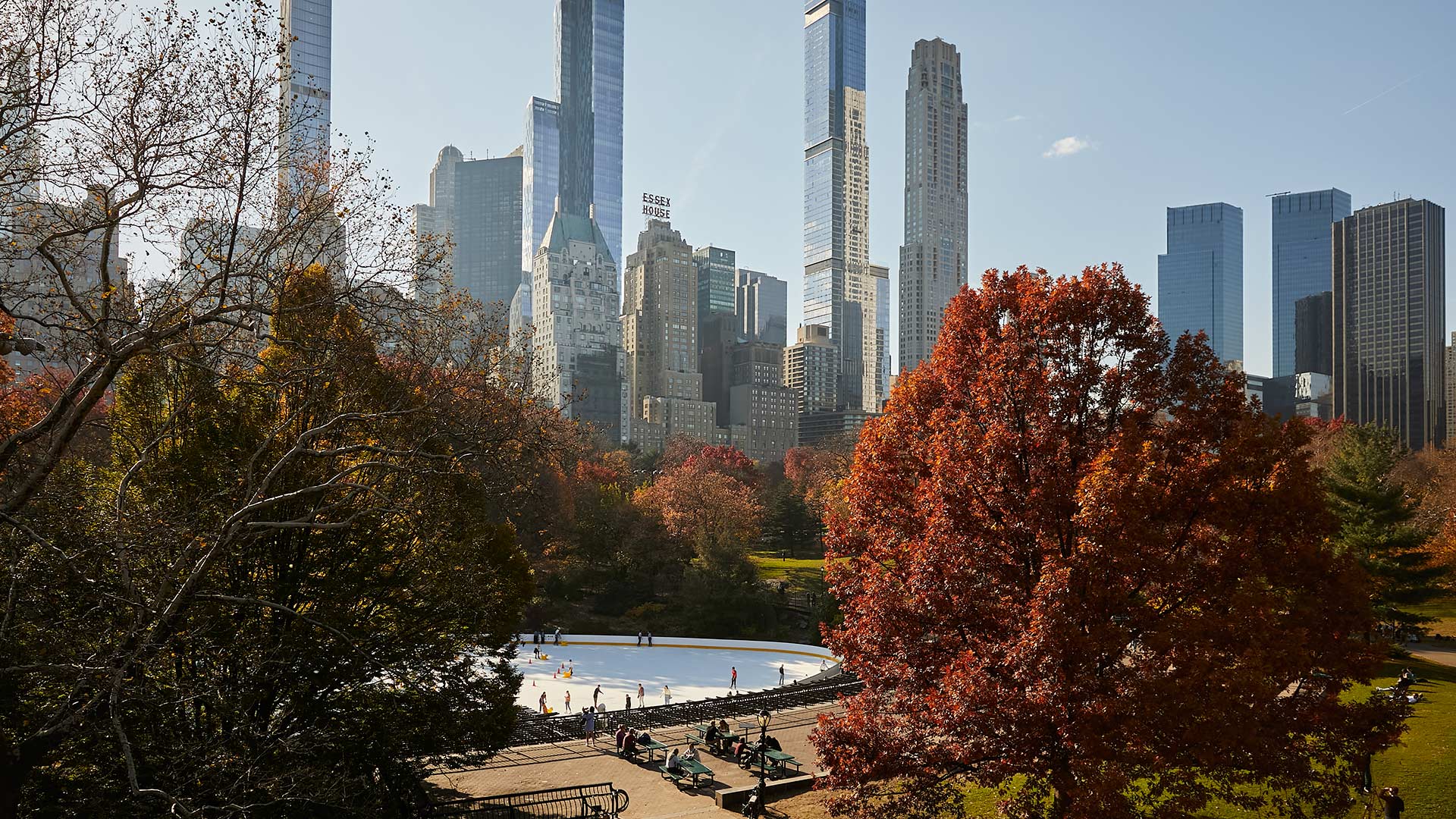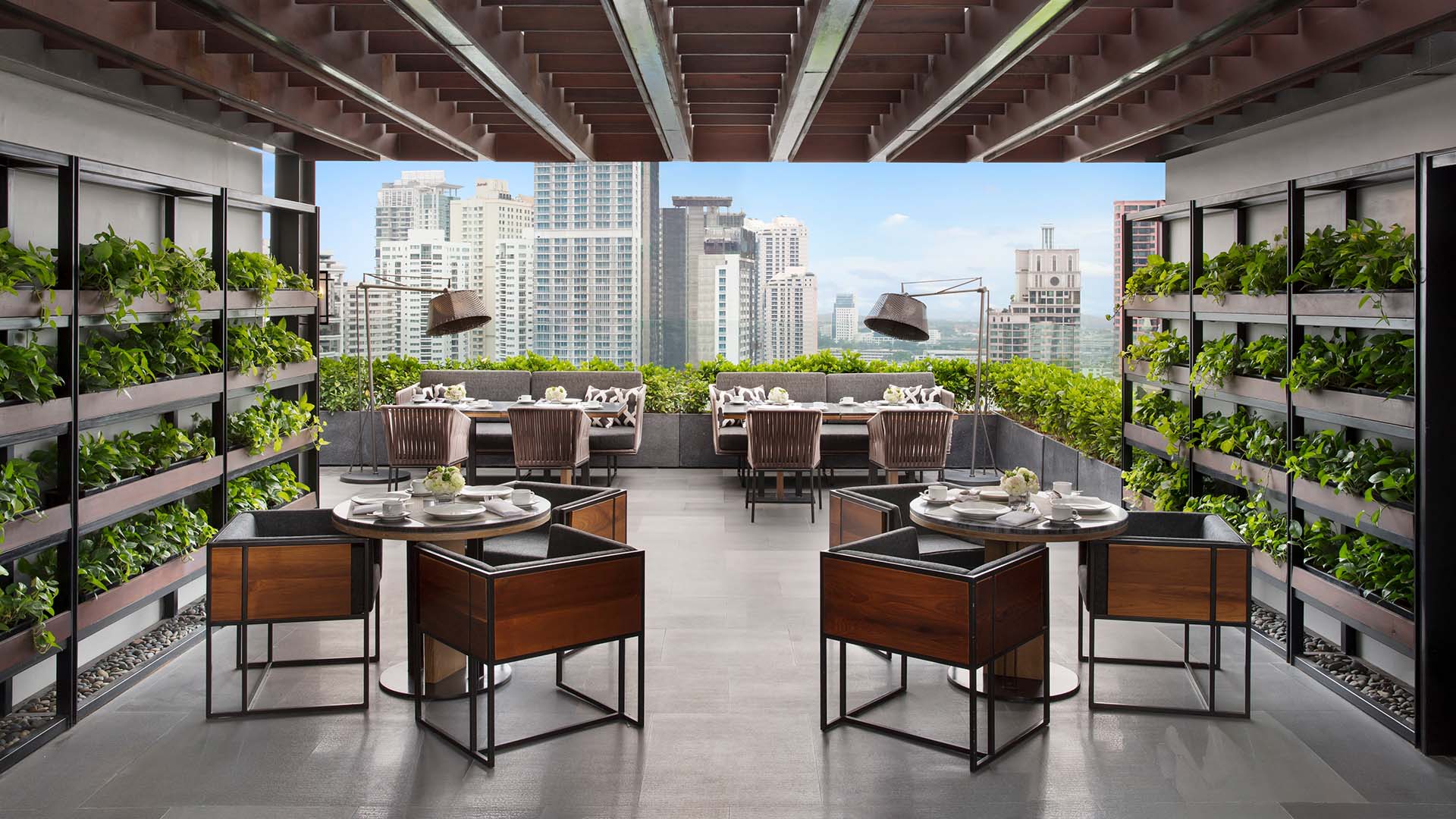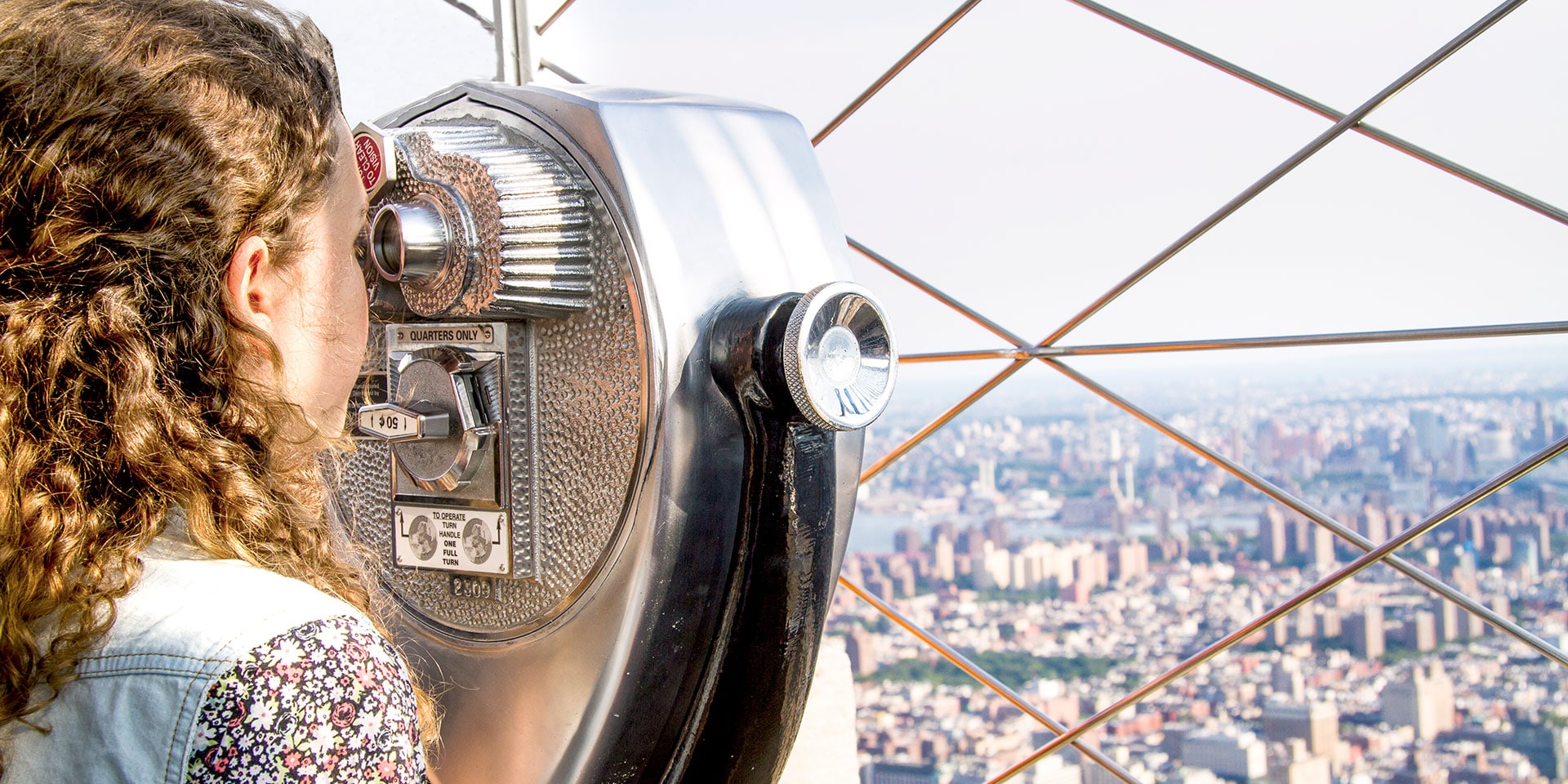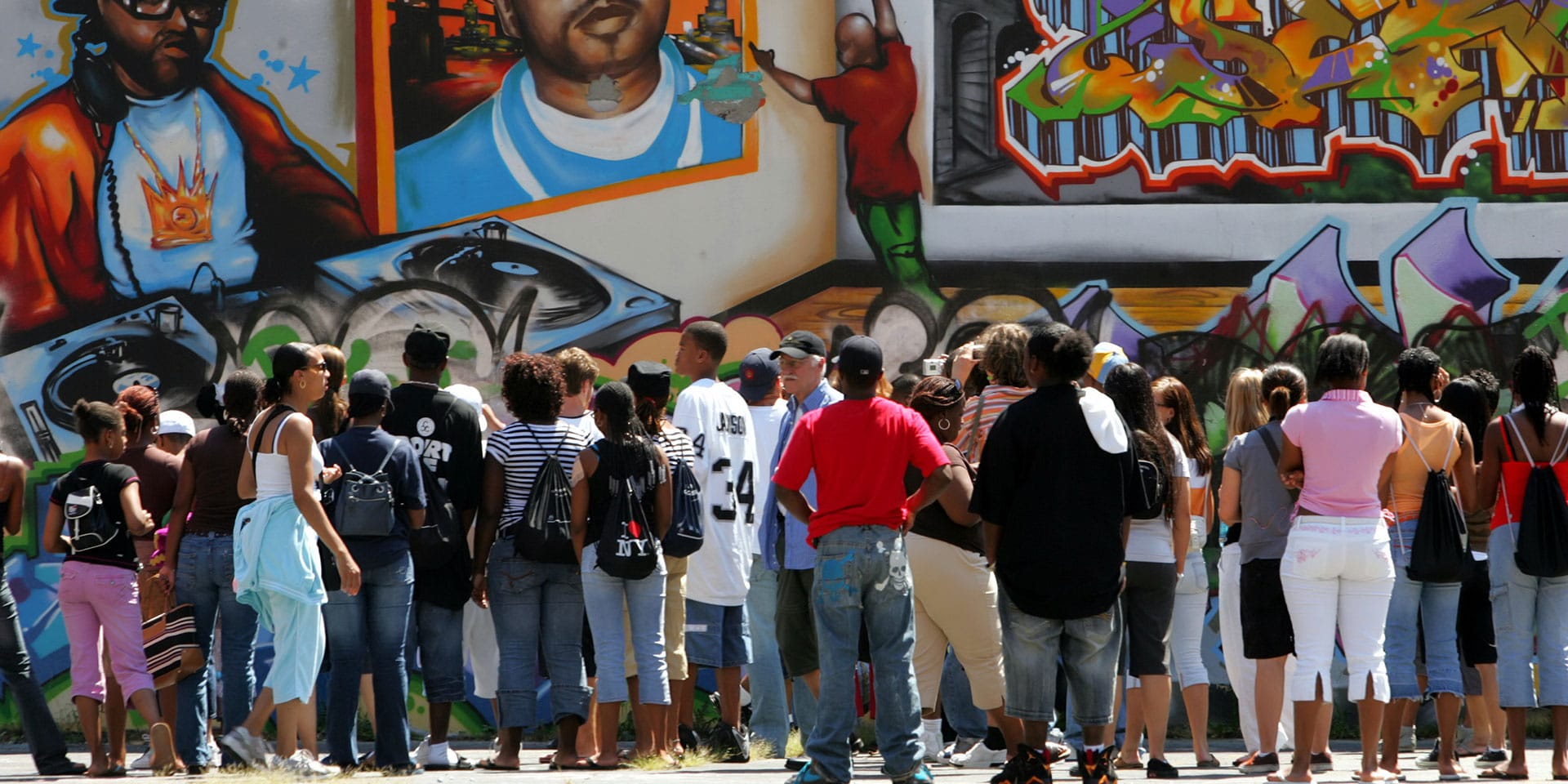
Rapper Raheim (with Grandmaster Flash and the Furious Five) leads tourists past the graffiti wall at 106th and Park on a Hush Tours excursion. (Photo: Getty Images)
New York CityExplore the Roots of Hip-Hop in New York City
By Kiratiana FreelonFlashback to 1973 and into the rec room of a Bronx apartment building at 1520 Sedgwick Avenue. Here DJ Kool Herc and his sister Cindy threw the ultimate back-to-school party. That night DJ Kool Herc played an eclectic mix of funk music, always extending the “breakbeat” — the best part of the song. More than 300 kids danced and partied for hours.
By the next day, DJ Kool Herc, whose government name is Clive Campbell, was known across the Bronx. This was the beginning of hip-hop.
Over the next decade, the sounds from this party evolved into hip-hop culture, which now includes four elements: Rapping, DJ-ing, graffiti-writing and b-boying. Netflix’s musical drama “The Get Down” pays homage to this history of hip-hop and its four elements.
From those humble beginnings in a West Bronx rec room, hip-hop music and culture has grown into the most popular music in the world. But its roots will always be in New York City. Tourists can easily trace the genre’s history throughout the Bronx, Brooklyn, Manhattan, Queens and Staten Island.
As always, check for travel restrictions and closures before planning your trip.
1520 Sedgwick Avenue and Hip-Hop Boulevard
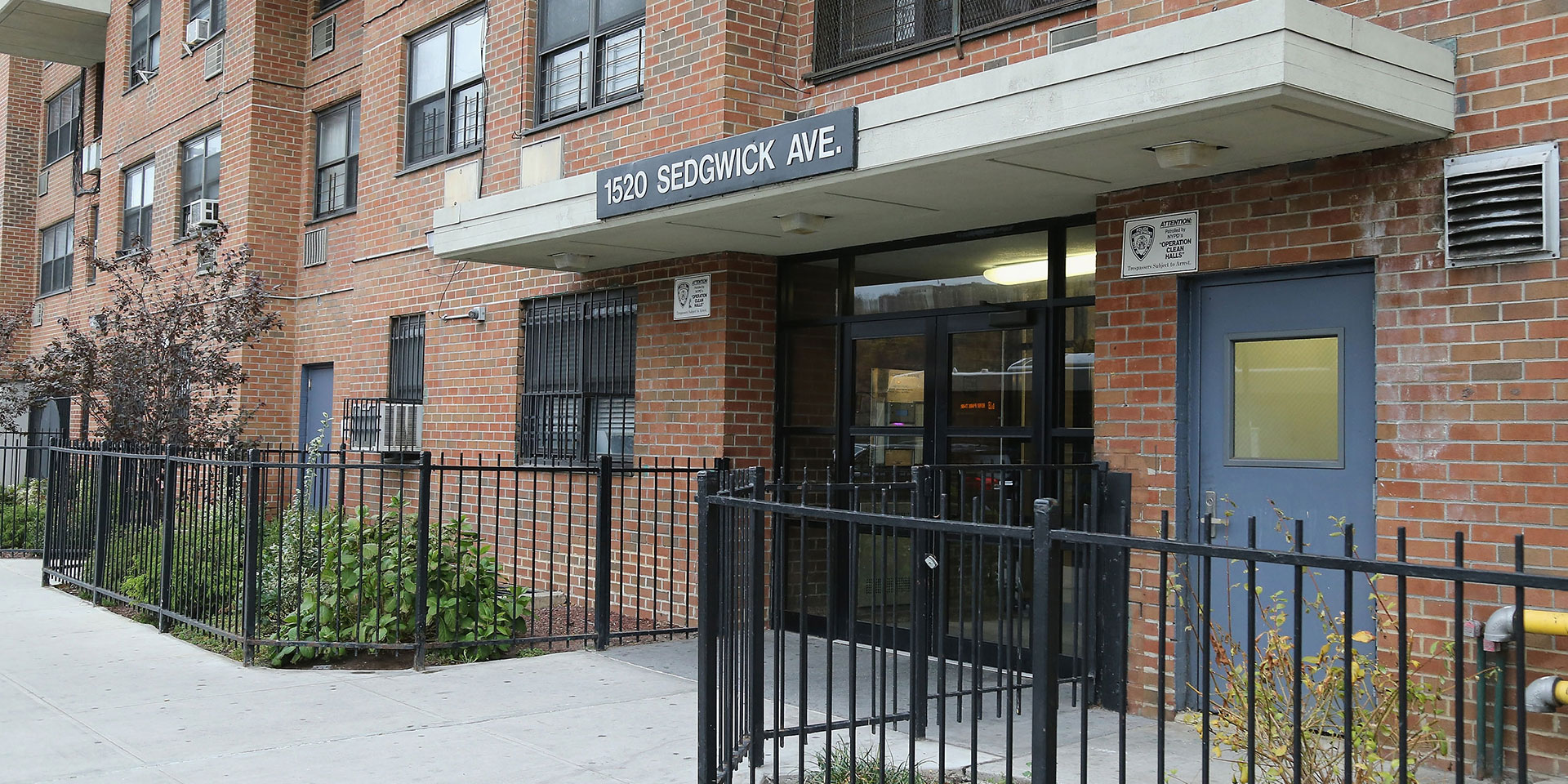
The street where hip-hop started, Sedgwick Avenue, now has an honorary name — Hip Hop Boulevard. Before the co-naming, only true hip-hop fans knew about DJ Kool Herc’s history at 1520 Sedgwick. Now it’s an open secret.
A New York City law prevents streets being named after living people, so instead of being named Kool Herc Street, the street became Hip Hop Boulevard, honoring the entire history and culture of hip-hop.
Bronx’s Cedar Playground
From 1973 to 1977, hip-hop culture grew at a leisurely pace throughout the Bronx. A freakish accident led to its explosion. During New York’s great electricity blackout of 1977, locals looted DJ equipment from electronic stories.
Overnight, New York had a thousand new DJs, leading to an explosion in parties, or “jams” at parks around the city. DJ crews would hook up their equipment to the light pole and throw teenage parties at parks like Cedar Playground.
149 Street-Grand Concourse Train Station
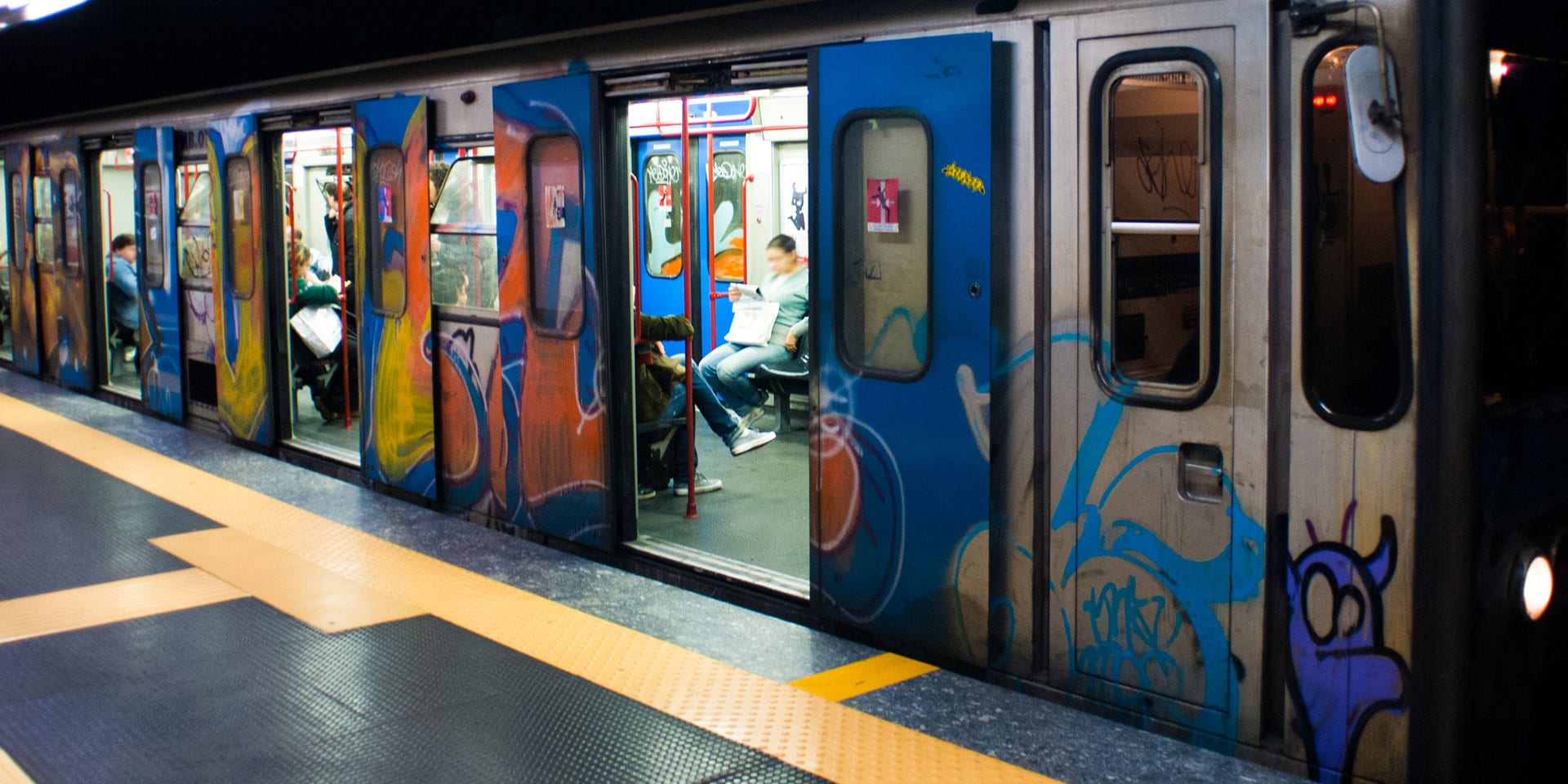
Despite its lack of graffiti, the Bronx’s 149th Street-Grand Concourse train station ranks high in terms of graffiti heritage. From the 70s until the 80s, graffiti writers met in the subway station and sat on the “writers’ bench” to compare designs, sign graffiti artists’ black books, and admire the artwork of the “bombed” (graffitied) trains that passed by.
Hollis, Queens
Hip-hop was born in the Bronx in the ’70s, but in the ’80s, the Queens borough ran it. The middle-class enclave of Hollis, Queens, produced some of hip-hop’s royalty. LL Cool J, Run-DMC and the masterful businessman Russell Simmons grew up there.
Its musical heritage shouldn’t be a surprise, though. In the ’50s and ’60s some of New York’s greatest black jazz musicians, including Louis Armstrong, moved from Manhattan to this southeastern corner of Queens. Make sure to check out the corner of 205th Street and Hollis Avenue, named “Run-DMC JMJ Way.”
226 S. James Place — Notorious B.I.G.’s Childhood Home
When Notorious B.I.G. (better known as Biggie Smalls’ to his fans) was growing up in Brooklyn in the late ’80s, his Clinton Hill/Bedford-Stuyvesant neighborhood was a culturally rich but crime-ridden area.
An infamous video shows a 17-year-old Biggie spouting intricate lyrics in front of a bodega in the neighborhood. Many of his experiences there formed the content of the lyrics of his classic debut album, “Ready to Die.” In 2013 Notorious B.I.G.’s childhood home was listed for $725,000.
Staten Island
When Wu-Tang Clan released its 1992 debut album, “Enter the Wu-Tang (36 Chambers),” Staten Island entered hip-hop history. Most members of the expansive group, which was inspired by kung fu movies, grew up in the Stapleton and Park Hill housing projects.
The (Former) Tunnel Nightclub
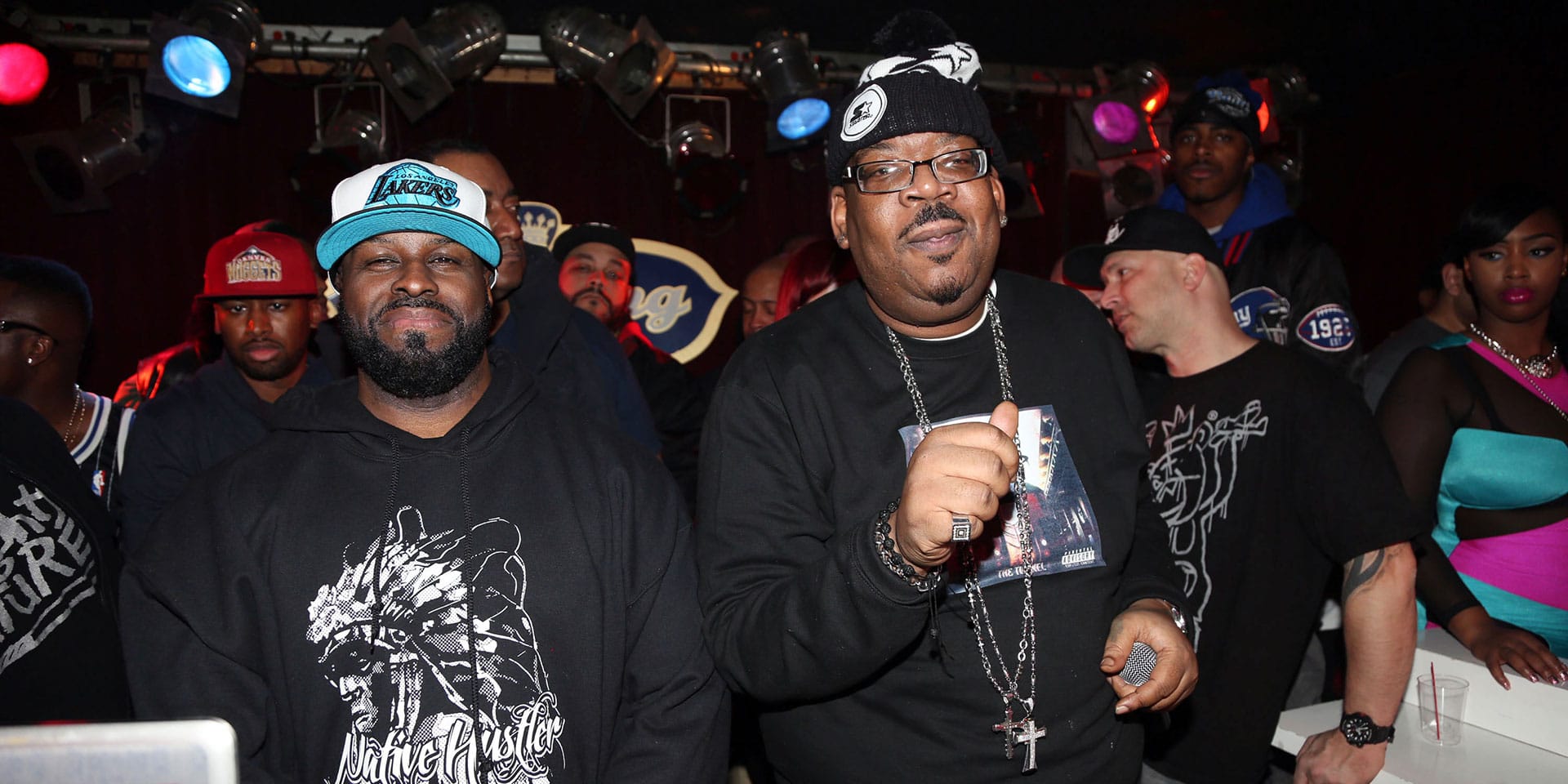
The Tunnel Nightclub, formerly located at 220 12th Avenue in Manhattan’s Chelsea neighborhood, is where hip hop grew up and crossed over into the mainstream.
Industry people, artists and regular people partied together at the venue’s Sunday night hip-hop party, which ran from 1993 until 2001 — an era dominated by the flashy Sean P. Diddy Combs and his Bad Boy Entertainment.
The party united people from all of New York’s boroughs, who often competed to see who could buy the most bottles of champagne.
Hush Hip Hop Tours
Hip-hop pioneer Grandmaster CAZ leads this bus tour that recounts the early history of hip hop throughout the Bronx and Harlem. Grandmaster Caz never achieved mainstream fame, even though he wrote one verse of the lyrics of hip-hop’s first hit — Sugar Hill Gang’s “Rapper’s Delight.”
Today he delights in his career as a storyteller and living historian of hip hop’s early days. Stops include 1520 Sedgwick Avenue, locations of old hip hop clubs and even a break-dancing session at a Harlem park.





